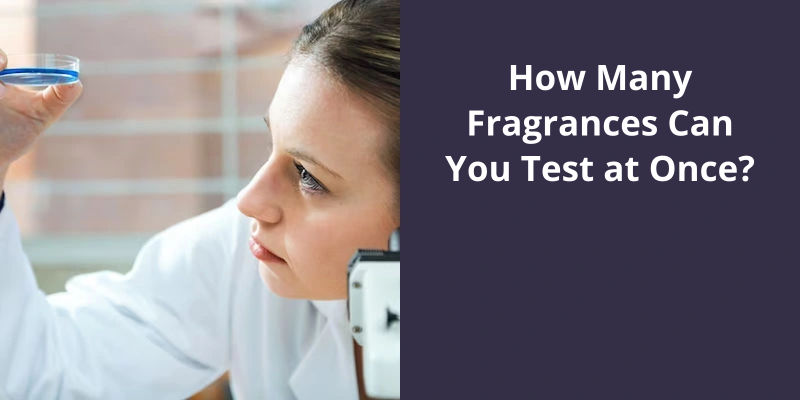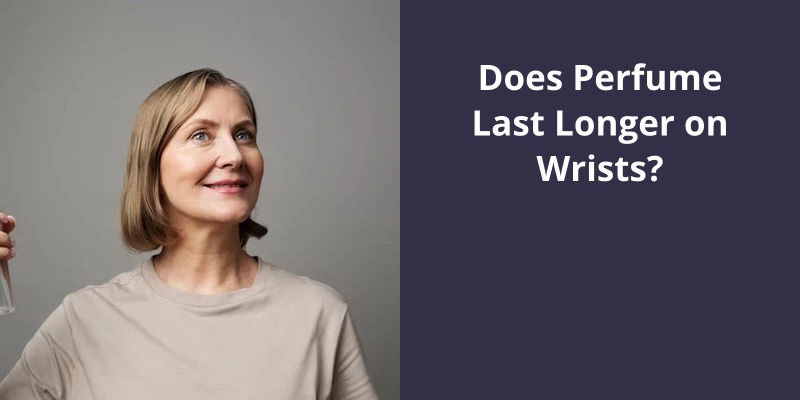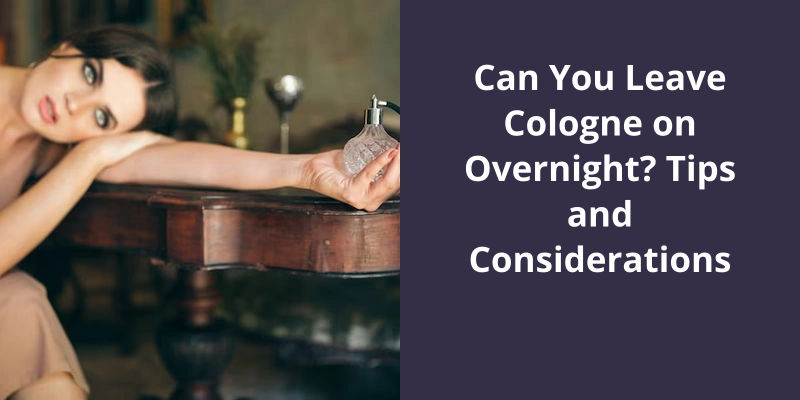When you’re testing fragrances, it’s recommended to try out only three to four scents at once to prevent your nose from becoming overwhelmed and to allow for a clear distinction between each fragrance. Start by lightly spraying the perfume on a paper strip or the back of your wrist, and understand that scents need time to unfold, so wait a few minutes in between each test. After testing four different scents, take a break or sniff coffee beans if they’re available, as they can help to cleanse your olfactory palette. Testing too many in one go can muddle your perception and make it harder to identify any single fragrance.

How Many Sprays to Test Perfume?
However, it’s important to note that this guideline is just that – a guideline. Some vial samples may have more or less product in them, and the size and intensity of the spray can also affect how much you use per application. Additionally, personal preference plays a big role in how much perfume someone wants to apply. Someone who prefers a stronger scent may use more sprays than someone who prefers a lighter scent.
Another factor to consider is the type of perfume. Eau de parfum and eau de toilette have different concentrations of perfume oils, meaning that the amount of product needed may differ.
In terms of longevity, a perfumes staying power can also influence how much is needed per use. A longer-lasting scent may require fewer sprays, as the fragrance will linger on the skin for a longer period of time.
Ultimately, the number of sprays needed to test a perfume is a subjective matter that depends on various factors, including the products concentration, intensity, and staying power, as well as personal taste. It’s important to take these factors into consideration when sampling a new fragrance to ensure that you get an accurate representation of the scent.
By taking these factors into account, youll be able to get the most out of your perfume sample and accurately gauge whether or not you want to invest in a full-size bottle.
Tips on How to Properly Apply Perfume for Optimal Scent Longevity
- Apply perfume to your pulse points such as your wrists, neck, and behind your ears as these spots tend to be warmer and help activate the fragrance.
- Apply perfume after you shower so that your pores are open and your skin is clean.
- Avoid rubbing your wrists together after you apply perfume as this can crush the scent and cause it to evaporate more quickly.
- Spray perfume from a distance of about 6-8 inches away from your body to ensure an even distribution of the scent.
- Layer your scents by using matching body washes and lotions that complement your perfume.
- Store your perfume in a cool, dry place away from direct sunlight to avoid degrading the scent over time.
- Use perfume sparingly so as not to overwhelm those around you. A light, subtle scent is often more appealing than a heavy, overpowering one.
- Experiment with different fragrance families such as floral, citrus, woody, and spicy to find the scents that work best with your body chemistry.
- Reapply your perfume throughout the day as needed, but be mindful of not overdoing it.
Layering fragrances can be an exciting way to create a unique scent that’s tailored to your personal preferences. However, it’s important to approach this art form with caution. Overdoing it can result in a nauseating blend, which defeats the purpose of layering in the first place. That’s why experts suggest layering a maximum of three scents, keeping in mind their complexity and notes. So, how do you layer different fragrances to create a harmonious blend? Let’s find out.
How Many Fragrances Can You Layer?
Layering fragrances is an art that requires a careful balance between the scents and the number of fragrances being used. While some people may choose to layer multiple fragrances, it’s important to remember that too many fragrances can create a chaotic scent that’s unappealing.
There are several reasons for this. This requires a certain level of knowledge and experience, as not all scents work well together. By limiting the number of fragrances being used, you can focus on finding scents that work well together, rather than simply piling on multiple scents.
Secondly, too many fragrances can create what’s known as scent overload. When there are too many scents competing for attention, it can be overwhelming and confusing for the nose. This can make it difficult to appreciate the individual scents and can lead to a headache or other sensory discomfort.
Thirdly, layering too many fragrances can make it difficult to pick out individual notes. This can lead to a muddled scent that loses it’s complexity and uniqueness.
For those who’re new to layering, it’s recommended to start with just one or two scents and gradually work up to three. This will allow you to become more familiar with layering techniques and to develop a sense of what works well together.
So, don’t be afraid to experiment with layering, but remember to keep it simple and balanced.
Tips for Layering Fragrances Successfully
- Start with a basic scent
- Add a complementary scent
- Consider the strength of each scent
- Test the combined fragrance on your skin before wearing it out
- Apply fragrances strategically to different points on your body
- Keep it simple and don’t overdo it
- Mix and match fragrances from the same brand or collection
- Consider the occasion and setting when layering fragrances
Now that you know the basics of testing fragrances, it’s important to know how to properly do so. Following these steps will ensure that you’re getting an accurate representation of the scent and can make an informed decision before making a purchase. So next time you find yourself at a fragrance counter, grab a scent blotter and give these steps a try.
How Do You Test Different Fragrances?
When it comes to testing different fragrances, there are a few things to keep in mind to ensure that you’re properly evaluating each scent. First, always start with a scent blotter. These white cardboard strips can be found next to tester bottles on fragrance counters and are the ideal tool for testing multiple fragrances at once. Simply place the blotter on a clean surface and apply a small amount of fragrance to the strip.
Once you’ve your scent blotter, it’s time to start testing. To properly evaluate a fragrance, you should spray a cloud of the perfume in a downward motion, making sure not to get too close to the blotter. This will help to evenly distribute the scent and ensure that you’re getting a true representation of the fragrance.
Next, bring the scent strip to your nose and take a deep breath. Be sure to inhale through the nose and not the mouth, as this will help you to fully experience the fragrance and it’s nuances. Take note of the initial scent, as well as any changes or developments that occur over time.
To do this, simply go about your day as normal and wait at least 30 minutes before evaluating the scent again.
How to Properly Store Fragrance Samples to Maintain Their Quality
Storing fragrance samples in a cool and dry place away from direct sunlight and heat can help maintain their quality. It’s also important to keep them in airtight containers to prevent exposure to air and moisture, which can affect their scent. Additionally, avoid storing fragrances in the bathroom or other humid areas.
Understanding the differences between perfumes can be confusing, but it’s important if you want to choose the perfect scent. One key factor to consider is the concentration of oil in the fragrance, which affects how long the scent lasts and how strong it smells. Additionally, perfumes are categorized according to their concentration levels, with Parfum being the strongest and longest-lasting and Eau Fraiche being the weakest and most fleeting. Knowing these details can help you make an informed decision when selecting your next signature scent.
How Can You Tell the Difference Between Perfumes?
Understanding the difference between perfumes is a critical step in choosing the right kind of fragrance for yourself. The first and most crucial factor to consider is the concentration of oil in the perfume. The higher the oil concentration, the more potent and long-lasting the aroma will be. The concentration of oil is what indicates the fragrance category, with four primary categories – Parfum, Eau de Parfum, Eau de Toilette, and Eau de Cologne, and Eau Fraiche. Understanding these categories is a crucial step in choosing the right kind of fragrance for your needs.
The Parfum category, also known as Extrait de Parfum or Pure Perfume, contains the highest concentration of oil, with typically around 20 to 30 percent. This high concentration of oil makes the aroma last for at least eight hours and up to 24 hours on the skin. The high percentage of oil also means that this perfume is the most expensive.
Eau de Parfum contains around 15 to 20 percent fragrance oil and is cheaper compared to Parfum. The fragrance lasts for up to six hours on the skin, making it a good value for money. Eau de Parfum is suitable for those who want a long-lasting perfume without the high price tag.
Eau Fraiche contains the lowest concentration of oil, only 1 to 3 percent, and is essentially a scented water. Eau Fraiche is perfect for those who want a light fragrance that they can reapply throughout the day.
Before making your purchase, consider the concentration of oil, fragrance type, price, and longevity to get the value for your money. Remember that the fragrance you choose is a crucial factor in making an impression, and selecting the right fragrance for yourself can significantly improve your quality of life.
Tips for Selecting the Right Perfume for Your Personality and Occasion
- Consider the occasion for which you’ll wear the perfume.
- Think about your personality and what type of scents appeal to you.
- Test the perfume on your skin to see how it reacts with your body chemistry.
- Take note of the notes in the perfume, such as floral or woodsy.
- Consider the season and time of day you’ll wear the perfume.
- Research reviews and recommendations from others.
- Don’t be afraid to ask for samples or recommendations from sales associates.
- Remember to apply the perfume lightly and in the right places.
- Don’t be afraid to change up your perfume for different occasions or moods.
Source: Perfume concentration guide: Eau de Toilette, Eau de Parfum …
Now that you know how to properly test perfume in-store, let’s explore a few tips on how to choose the right scent for you.
Where Do You Spray Perfume for Testing?
For many, the process of testing perfume in-store can be overwhelming, especially when presented with an array of options. One of the most popular and recommended ways to test perfume is by spraying it on your wrists. This is because the skin on your wrists showcases varying levels of oils and sweat glands, which can help react differently to different scents.
Once you’ve sprayed the perfume on your wrists, it’s recommended to allow it to settle for around 20-30 minutes. During this time, the aroma of the perfume will start to develop and mix with your skin chemistry. This will give you a better idea of how the perfume will smell on you after a few hours of wear.
It’s also a good idea to take a break after spraying perfume on your wrists and leaving it to develop. Take a walk, grab a coffee or do something else that will keep you occupied for a little while. This will allow you to clear your nose and avoid overwhelming your senses with too many fragrances.
It’s important to keep in mind that everyones skin reacts differently to perfume, so what may smell great on someone else may not smell great on you. This is why it’s always best to test perfume on your own skin and allow it to settle before making a purchase.
In some cases, you may also want to spray perfume on other pulse points such as the neck or chest. Keep in mind, however, that spraying perfume on these areas can be a little more intense and may not provide as accurate of a result as spraying it on your wrists.
Ultimately, the key to finding the perfect perfume is patience and trial and error. By testing different perfumes on your own skin and allowing them to settle, you can get a better understanding of how the fragrance will smell on you and find something that truly suits your style and personality.
Conclusion
In conclusion, while the allure of trying multiple fragrances at once can be tempting, it's important to resist the urge in favor of a more mindful approach. Taking the time to savor and appreciate each fragrance can lead to a more fulfilling olfactory experience and a greater understanding of one's personal scent preferences.





